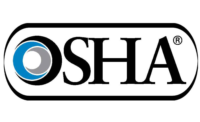In an age when "paperwork burden" is a politically incorrect term, OSHA's intent with this proposal is to take some of the confusion out of recordkeeping. Also, the recordkeeping requirement will be lifted for thousands and thousands of small businesses as OSHA proposes to expand its exemption from firms with 10 or less employees to now blanket those with 19 or fewer employees. Ease-of-use is also an issue: The agency is proposing to reduce the size of its forms, and allow employers to keep records on computers, with print-outs used for posting purposes.
Here's a closer look at some of the proposal's key components:
Exemptions
Employers in the construction industry with 10 or fewer employees and non-construction firms with 19 or fewer employees will now be exempted from all requirements except the reporting of fatality and multiple hospitalization incidents.There are changes in specific industries that OSHA will exempt in the service sector, based on an analysis of lost workday injury data. Auto and home supply stores, for example, would now have to comply with all recordkeeping requirements. Hardware stores, which currently must comply with all requirements, would now only have to keep track of fatalities and multiple hospitalizations.
Forms
Each employer will maintain an OSHA Injury and Illness Log and Summary -OSHA Form 300, which replaces the OSHA 200 log. In addition, employers must complete an OSHA Injury and Illness Incident Record- OSHA Form 301, formerly OSHA Form 101 -for each recordable injury or illness.Incidents must be recorded within seven calendar days of receiving information about the case.
So what qualifies as a recordable incident? OSHA says an injury and illness must be work-related, a new case, and meet at least one of these criteria: ·
- Results in death or loss of consciousness; ·
- Results in days away from work, restricted work activity, or job transfer; ·
- Requires medical treatment beyond first aid; ·
- Is a recordable condition listed in the proposal's Mandatory Appendix B.
OSHA will no longer ask employers to distinguish between injuries and illnesses.
Illness reporting
Each employer will maintain an OSHA Injury and Illness Log and Summary -OSHA Form 300, which replaces the OSHA 200 log. In addition, employers must complete an OSHA Injury and Illness Incident Record- OSHA Form 301, formerly OSHA Form 101 -for each recordable injury or illness.Incidents must be recorded within seven calendar days of receiving information about the case.
So what qualifies as a recordable incident? OSHA says an injury and illness must be work-related, a new case, and meet at least one of these criteria: ·
- Results in death or loss of consciousness; ·
- Results in days away from work, restricted work activity, or job transfer; ·
- Requires medical treatment beyond first aid; ·
- Is a recordable condition listed in the proposal's Mandatory Appendix B.
OSHA will no longer ask employers to distinguish between injuries and illnesses.
Definitions
Much of recordkeeping compliance comes down to being able to understand definitions. Here are several specific changes OSHA proposes:First Aid
OSHA says an injury or illness is recordable if it requires medical treatment beyond first aid. The proposal lists these treatments to define first aid: ·
- Visit(s) to a health care provider limited to observations ·
- Diagnostic procedures, including the use of prescription medications solely for diagnostic purposes, such as eye drops to dilate pupils ·
- Use of nonprescription medications, including antiseptics ·
- Simple administration of oxygen ·
- Administration of tetanus or diphtheria shot(s) or booster(s) ·
- Cleaning, flushing, or soaking wounds on skin surface ·
- Use of wound coverings such as bandages, gauze pads, etc. ·
- Use of any hot/cold therapy, except for musculoskeletal disorders ·
- Use of any totally non-rigid, non-immobilizing means of support, such as elastic bandages ·
- Drilling of a nail to relieve pressure for subungual hematoma ·
- Use of eye patches ·
- Removal of foreign bodies not embedded in the eye if only irrigation or removal with a cotton swab is required ·
- Removal of splinters or foreign material from areas other than the eyes by irrigation, tweezers, cotton swabs or other simple means.
Work-Related
Injuries and illnesses are considered to be work related if an event or exposure in the work environment either caused or contributed to the condition, or aggravated a pre-existing condition. Work-related also applies to injuries and illnesses sustained while employees are: engaged in required apprenticeship or vocational training; on break, in rest rooms or storage areas located on the employer's premises; performing work at home (injury or illness cannot be due to the general home environment); traveling on business, including to and from customer contacts; and engaged in a work activity where a vehicle is considered the work environment, such as a truck or taxi.
OSHA says injuries and illnesses occurring under the following circumstances are not work related: ·
- When individuals are on company premises as a member of the general public, not as a worker ·
- Symptoms surface at work but solely result from a non-work-related event or exposure outside the work environment ·
- During voluntary participation in wellness programs, medical activities such as blood donations, or recreational activities like racquetball or baseball ·
- When workers are eating, drinking, or preparing their own food in the workplace ·
- When workers are doing personal tasks outside of normal working hours ·
- When acts of violence are committed by a worker's family or ex-spouse unrelated to the worker's job; this includes intentionally self-inflicted injuries ·
- When employees are entering or leaving company parking lots and access roads ·
- If the worker was never engaged in any duty at work that could have placed stress on the affected body part, or was never exposed to any chemical or physical agent at work that could be associated with the observed injury or illness ·
- When workers are involved in voluntary community or civic projects away from the company premises ·
- If the case solely results from normal body movements like walking unencumbered, talking, tying a shoe, sneezing, coughing -provided the activity doesn't involve a job-related motion and the work environment is not a contributing factor ·
- Cases relating to mental illness are not considered work related, except mental illnesses associated with post-traumatic stress.
"New Cases"
A new injury or illness does not result from the recurrence of a pre-existing condition if no new workplace incident or exposure occurs. A recurrence of a previous case is presumed to be new when it results from a new work situation, or 45 days have elapsed since medical treatment, restricted work or days away from work were discontinued and the last signs or symptoms were experienced
Subcontractor records
Any controlling employer in the construction industry overseeing a project with an initial contract worth of at least $1 million must maintain a separate injury and illness log for recordable cases sustained by subcontractor employees.Records do not have to be kept for subcontractors with less than 11 employees. Information for each recordable case involving a subcontractor employee includes the person's name, company, date of event, and brief description of the injury or illness.
This new requirement does not relieve subcontractors of their responsibilities to complete a year-end injury and illness summary, more in-depth case reports (OSHA 301), and to update records as required.



